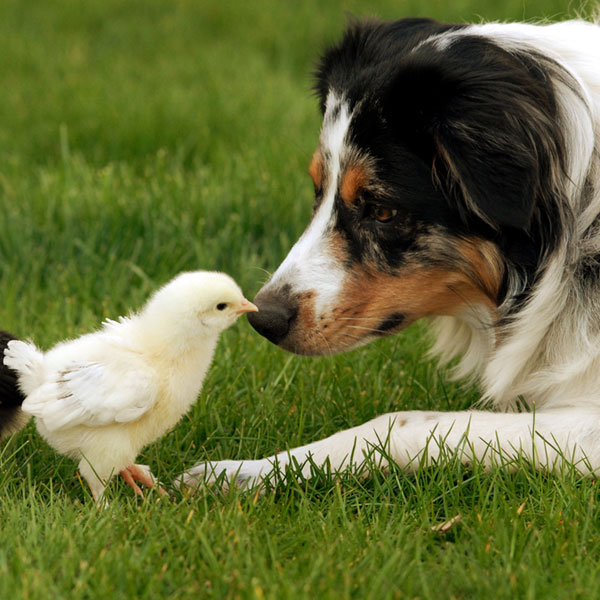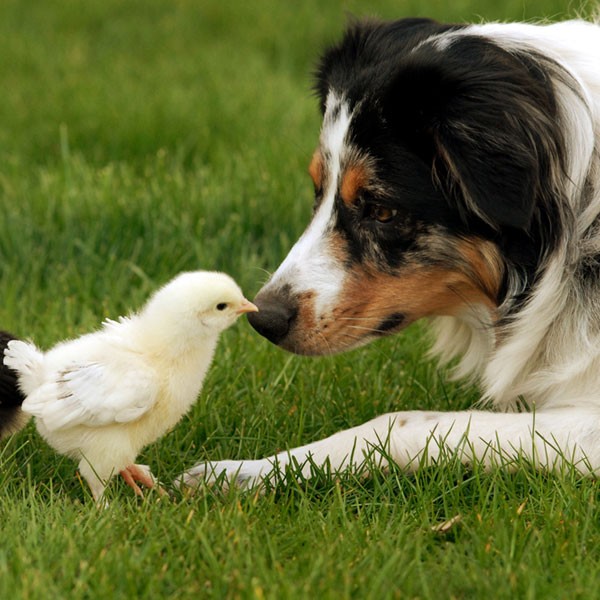Dogs have done nearly every job imaginable over thousands of years of domestication, but their wide-ranging work on the farm is one of the most crucial parts of their evolution. Ever since man began growing crops and raising livestock, dogs have been by their side to help.
While herding breeds are some of the most familiar, canines play several roles to protect their family and promote their livelihood. While their jobs are unique, farm dogs share a tendency for determination, intelligence, and individuality that set them apart. Let’s find out what makes them unique in this breakdown of the 12 best farm dogs.

How Are Farm Dogs Classified?
Farm dogs perform numerous jobs around the house, in the barns, and in the field to make life safe, easy, and productive for their families. Some act as guardians of the home and livestock, others pull carts, and independent-minded scrappers fend off pests that harm their animals or pollute their stock.
- Herding
- Guarding
- Drafting/cart-pulling
- Ratting/pest control
For limited operations and cash-strapped farmers, some dogs take on multi-purpose roles around the property. Today, it’s common to find family dogs sharing the chores around the field and barnyard.
The 12 Best Farm Dogs
1. Border Collie
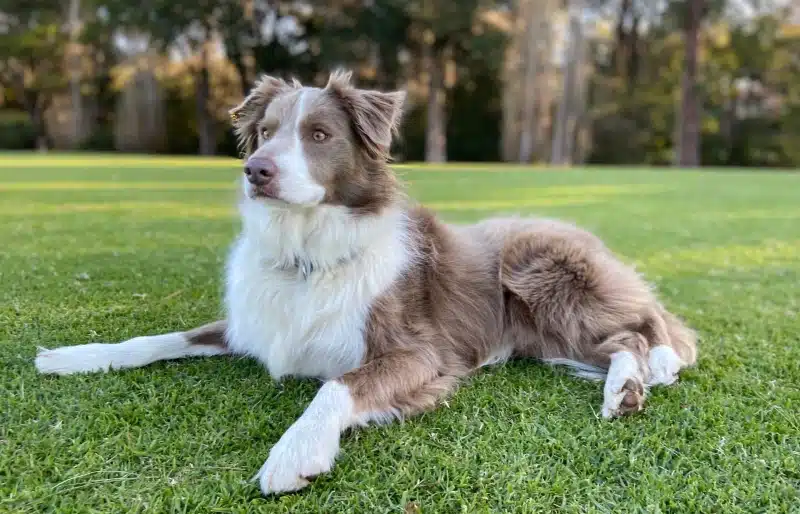
| Origin: | 1800s, England-Scotland border |
| Lifespan: | 12–15 years |
| Height: | 18–22 inches |
The Border Collie became a distinct breed in the late 1800s, but the working Collie has been a valuable aid to shepherds for centuries. Like other Collies found across the country, these agile and persistent dogs were built for the harsh terrain and weather where they worked.
Considered the brightest breed by many, the Border Collie is bred more for function than looks and consistently dominates sheepdog trials.
2. Australian Cattle Dog
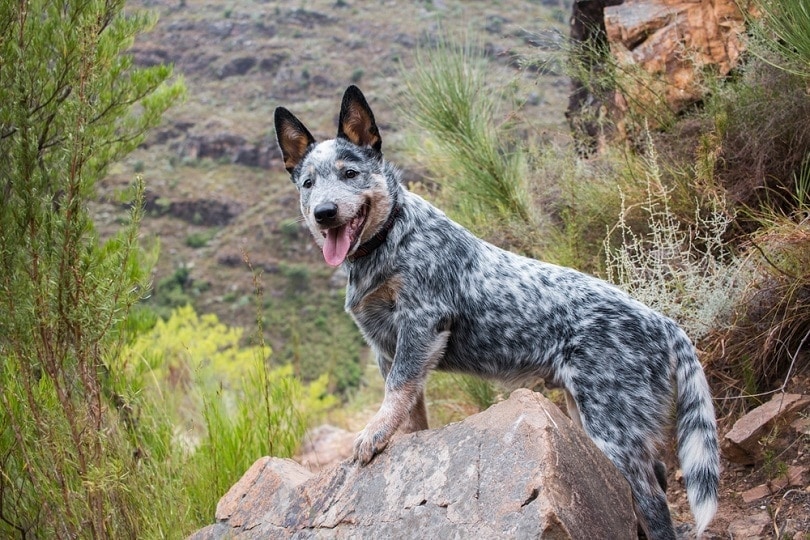
| Origin: | 1800s, Australia |
| Lifespan: | 12–16 years |
| Height: | 17–20 inches |
The beautiful, speckled coat of the Australian Cattle Dog (Heeler) results from crosses between working dogs and native dingoes in the original breeders’ attempts to refine a cattle herder built for the demanding Australian landscape.
The Australian Cattle Dog is energetic, powerful, and highly intelligent, and they’re the cattle-herding counterpart to the Kelpie. They earned the Heeler name from their technique of nipping at the heels of the driven livestock.
3. Australian Shepherd
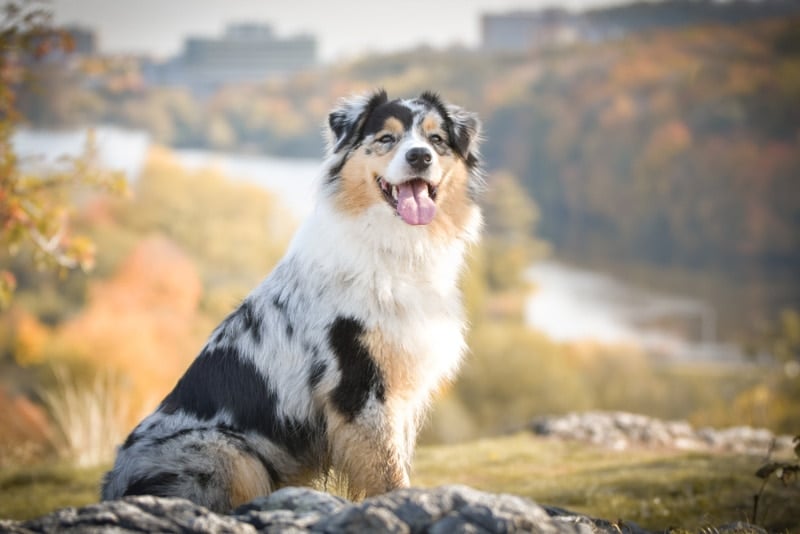
| Origin: | 1800s, United States |
| Lifespan: | 12–15 years |
| Height: | 18–23 inches |
The misleadingly named Australian Shepherd is an American canine that originated in the Old West in the 1800s. As the Gold Rush took off and the Civil War ended, the need for sheep-raising, particularly out west, exploded. Many ranchers brought their English-derived working Collies to meet the demand, an exuberant bunch that would take shape into the modern Australian Shepherd.
Though there’s still some debate over the Australian Shepherd’s origins, their talents, determination, and athleticism are undeniable. With gorgeous looks and joyous temperaments, they have become equally valued as companions for families across the nation.
4. Belgian Malinois
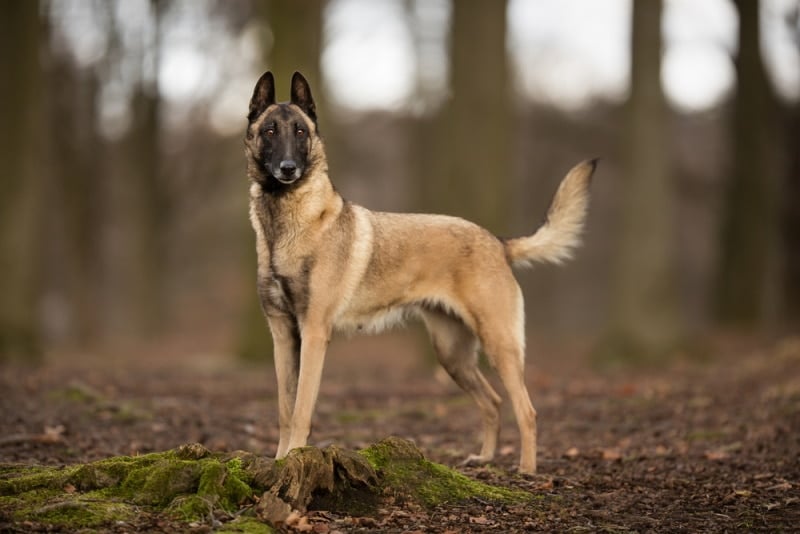
| Origin: | 1800s, Belgium |
| Lifespan: | 14–16 years |
| Height: | 22–26 inches |
As a versatile herder and guardian on the farm, the Belgian Malinois originated in Malines, Belgium, as one of four related herding breeds named for their respective regions around Brussels.
The individual breeds of these Belgian Sheepdogs took shape in the early 1900s as breed clubs grew their reputations. The Malinois became AKC-recognized in 1959.
The Belgian Malinois is one of the most intelligent breeds, with some studies placing them above Border Collies. Paired with their agility and strength, their trainability is earning newfound appreciation.
Belgian Malinois are one of the top military and police dogs, often replacing the larger German Shepherd, and their popularity as a companion has steadily grown over the years.
5. German Shepherd
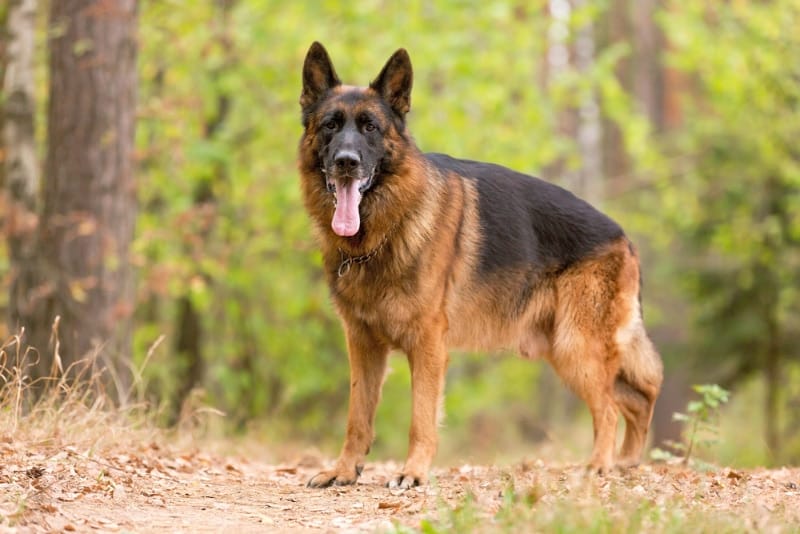
| Origin: | 1800s, Germany |
| Lifespan: | 7–10 years |
| Height: | 22–26 inches |
The German Shepherd was originally a herding dog that used their powerful body to act as a living fence for sheep and protect against predators. As sheep populations declined in the late 1800s, the dogs’ biddability and athleticism allowed them to transition easily into police and military work.
As one of the brightest and most trainable dogs, the GSD is among the hardest-working and most versatile breeds. Alongside their work as guardians, these affectionate dogs make excellent service and therapy animals. But, like most working dogs, it takes an assertive and attentive owner to keep them obedient.
6. Airedale Terrier
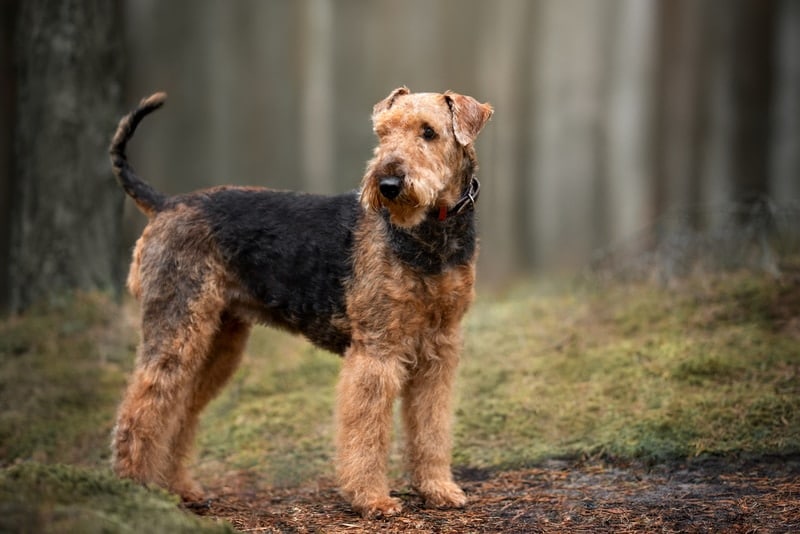
| Origin: | 1800s, Yorkshire, England |
| Lifespan: | 10–13 years |
| Height: | 20–23 inches |
As the largest of the Terrier breeds, the Airedale is also one of the most capable, courageous, and intelligent athletes that can excel in competition, on the hunt, and on the farm.
As the name suggests, the Airedale Terrier originated around the Aire River in England. For many working-class farmers, they were the perfect all-purpose helper to dispatch vermin of all sizes and occasionally assist with herding livestock.
The Airedale Terrier maintained their utility by becoming a favored police dog by the late 19th century. When WWI erupted, the dogs distinguished themselves on the battlefield, showcasing their unique courage and capability to become indispensable for Allied forces.
Today’s Airedales are multi-purpose farm dogs capable of fending off everything from rats to groundhogs to full-grown grizzly bears!
7. Great Pyrenees
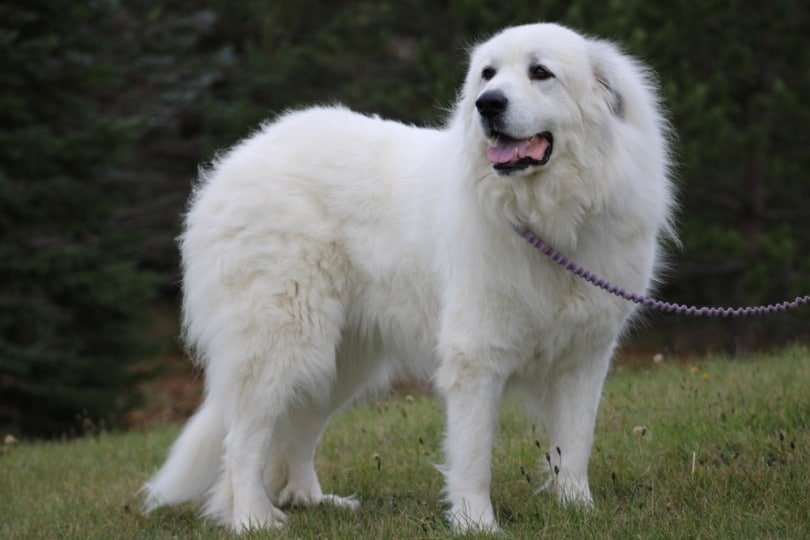
| Origin: | ~1800–1000 B.C., France |
| Lifespan: | 10–12 years |
| Height: | 25–32 inches |
The Great Pyrenees gained their name from the Pyrenees Mountains, separating Spain and France, where they originated. An ancient breed, the guard dog has been a long-time overseer of high-altitude sheep flocks, blending in with their white fur and fighting off predators with a strong body and ferocious bite.
The Great Pyrenees resembles another popular guardian breed, the smaller Maremma Sheep Dog of Italy. Great Pyrs are a top choice for many farmers, and the results speak for themselves.
In 2023, a Great Pyrenees earned an American Farm Bureau Federation Farm Dog of the Year nomination by protecting his flock against a pack of 11 coyotes, eight of which he killed. Although they are undoubtedly formidable against their foes, this giant breed is prized for their calm, affectionate demeanor in the home.
8. Bernese Mountain Dog
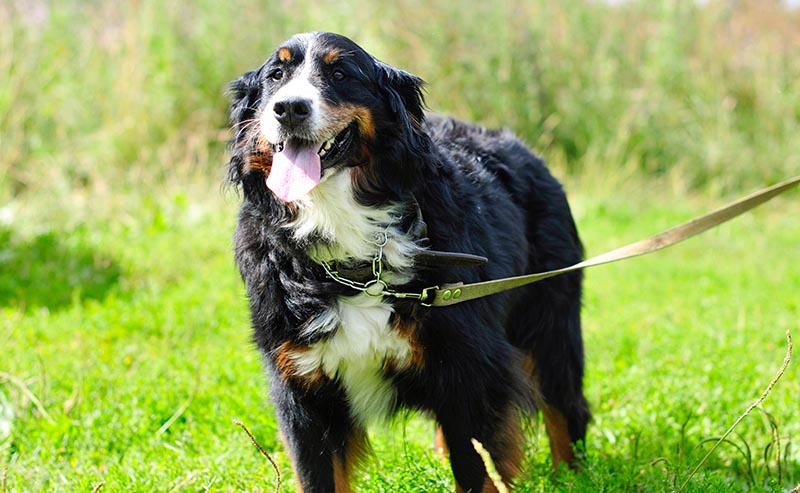
| Origin: | ~0 A.D., Switzerland |
| Lifespan: | 7–10 years |
| Height: | 23–27.5 inches |
The Bernese Mountain Dog, or the “Berner,” first appeared over 2,000 years ago when Roman legions traversed the Swiss Alps with their guardian Mastiffs. When they were mated with black-and-tan dogs, the Swiss breeds came into form, with the long-haired Bernese Mountain Dog earning their name from the Canton of Bern.
Since their ancient origins, the Bernese Mountain Dog has been a consistent feature on the farm. Their large frames and calm temperaments are ideal for cart-pulling, and their alertness makes them trusted guards over family and flock. Though aloof with strangers, the Berners’ loving and gentle nature makes them a hit with families, whether or not they live on a farm.
9. Anatolian Shepherd
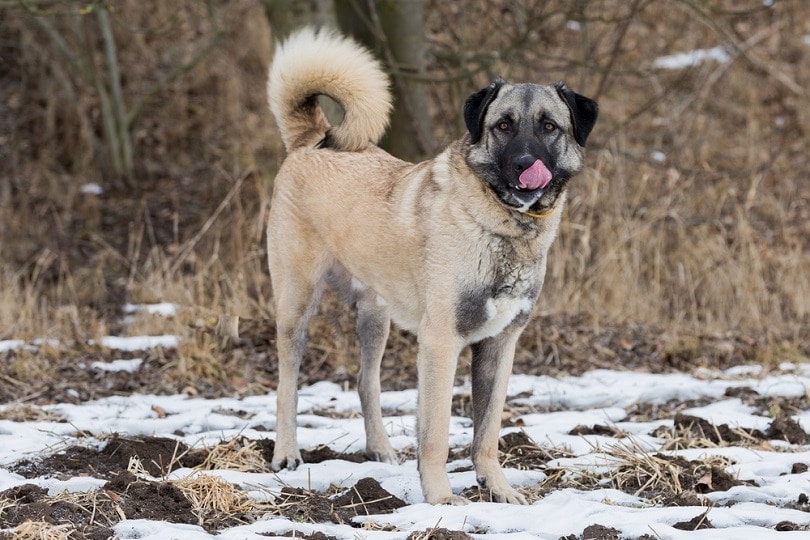
| Origin: | ~2,000 B.C., Turkey |
| Lifespan: | 11–13 years |
| Height: | 27–29 inches |
The Anatolian Shepherd is a Turkish breed likely descended from the Tibetan Mastiff of Central Asia. With massive frames and a territorial nature, they perform tasks similarly to the Great Pyrenees, working among flocks to protect them from outsiders and predators. They were such a treasure in their native land that exporting only began relatively recently. The first Anatolian Shepherds didn’t reach America until the 1900s.
Working in the harsh Turkish terrain with minimal supervision, Anatolian Shepherds developed agility to rival their strength. Their shorter coats make them more adaptable to varying conditions.
Though highly independent and not particularly affectionate, the Anatolian Shepherd’s faultless loyalty makes them one of the best farm dogs to keep watch over land, livestock, and loved ones.
10. Old English Sheepdog
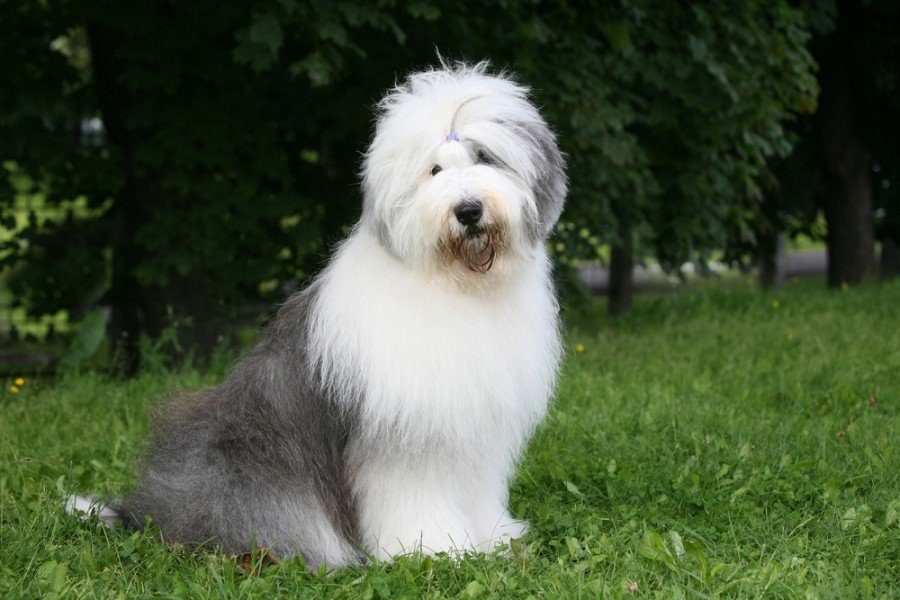
| Origin: | 1800s, England |
| Lifespan: | 10–12 years |
| Height: | 21–22 inches |
Even if you don’t live on a farm, the Old English Sheepdog’s jovial expression and soft, shaggy coat can make anyone want this classic herding dog. The AKC recognized the Old English Sheepdog in 1888. Since then, they have grown in popularity, becoming an adored pet and show dog.
Alongside their ability to defend and drive herds, the Old English Sheepdog’s temperament makes them one of the best farm companions. The fun and fluffy dogs are excellent with children and other pets, offering a balance of trainability, energy, and composure that makes them impossible not to love.
11. Jack Russell Terrier
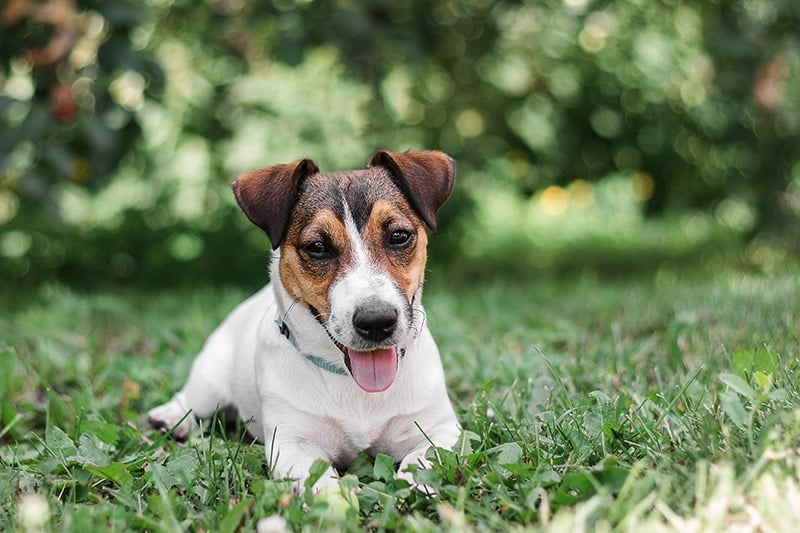
| Origin: | 1800s, Devon, England |
| Lifespan: | 12–14 years |
| Height: | 10–12 inches |
The energetic Jack Russell Terrier has been a sportsman’s favorite since the early 1800s. The remarkable working dog, named for Reverend Jack Russell, was a fox-hunting expert, using their small limber body to chase game across fields and into burrows. A specialist by no means, it’s an equally capable farm dog for eradicating all manner of vermin.
Jack Russells make happy, outgoing, and exuberant companions when they aren’t boldly chasing down pests. Like many Terriers, they’re known for hard-headedness, independence, and high energy that requires an active owner.
12. Rat Terrier
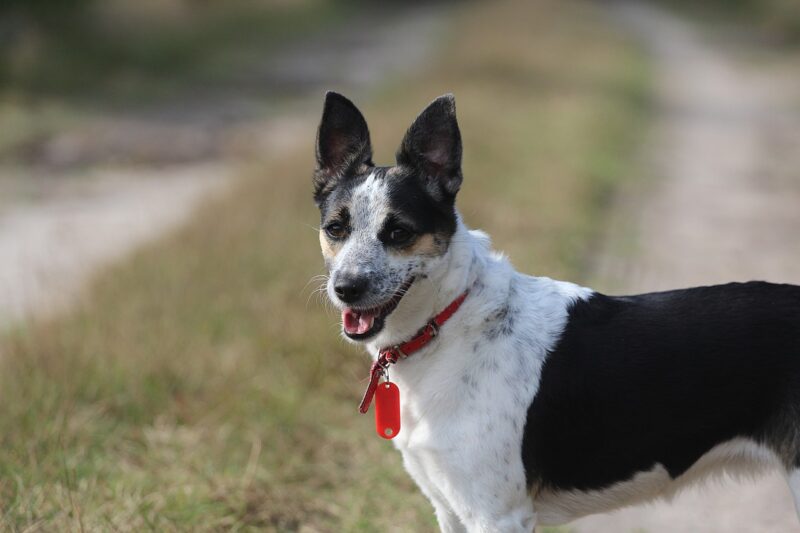
| Origin: | 1800s, England |
| Lifespan: | 12–18 years |
| Height: | 10–18 inches |
The Rat Terrier first appeared in the U.S. by way of England in the late 1800s. Mixes of several Terriers, Beagles, Whippets, and other breeds created the ultimate ratter, a rare talent that even Teddy Roosevelt appreciated.
Roosevelt received his first Rat Terrier from his bear-hunting guide in the early 1900s, employing it as a rat chaser around the White House. The president even received credit for giving the breed its name!
Rat Terriers are arguably the finest vermin-control dogs, but they also make some of the best companions to have on the farm. The lively dogs are excellent with kids and are quick learners, though they need frequent activity and training to satisfy their high energy levels.

Conclusion
These dogs will astound you with their natural knack for hard work when given the space and opportunity. Farm jobs have changed considerably as technology and chemistry have replaced dogs in many functions. However, as long as there are ranches or farms, there will be a need for capable dogs, and kennel club working dog competitions will always fill the void to let these determined breeds fulfill their purpose.
Featured Image Credit: Tracey Helmboldt, Shutterstock

